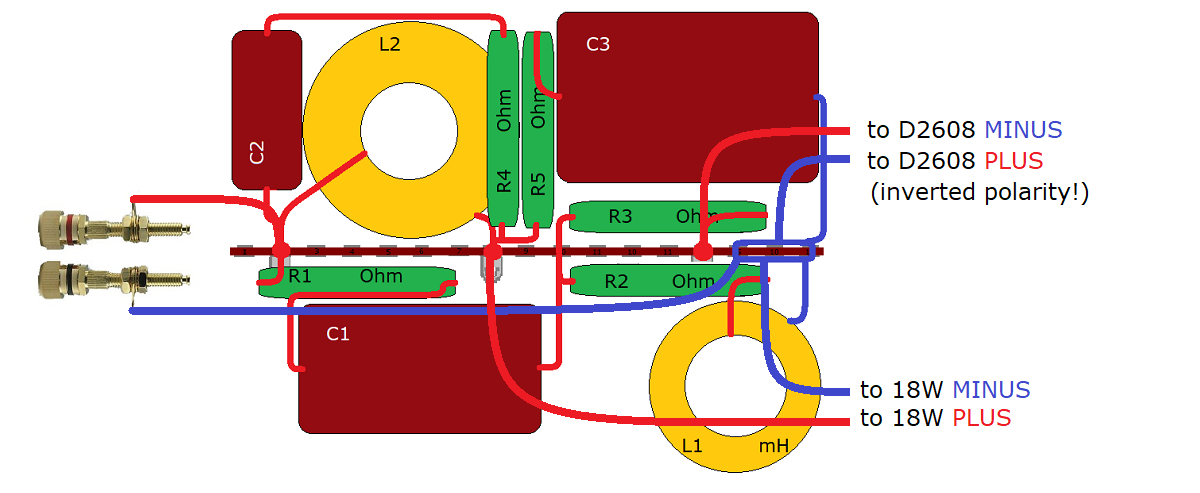ScanSpeak
Discovery-18W-mkII
Copyright 2023 © Troels Gravesen
Go to on this page:
DRIVERS CROSSOVER CABINET WORKSHOP PICS MEASUREMENTS SPEAKER-KIT CROSSOVER LAYOUT
The Discovery series of drivers are popular due to their high
performance/cost ratio. I never had to do edge-coating to any of the
Discovery drivers due to their exceptional linear response in all of
their operating range. Rather unusual, I would say. When manufacturers
launch a new range of 4-8 inch drivers with similar design in baskets,
cone materials, etc., we usually find some good, some not so good. The
different size of cones and property of suspensions may work very
differently whether it's a 4" driver or a 6" or an 8" driver and not all
manufacturers go the full length of adjusting suspensions to a
particular cone and get it all right. Not
so with the Discovery series. They all lack the all too common rubber
resonance around 800-1200 Hz. Their modest break-up in the treble range
make them easy on crossovers and whatever trouble we may experience is
mostly due to poor front panel design. As always we should try out
different baffle geometries before settling on a specific design.
I can understand why some people refrain from seriously expensive
drivers - and not only for economical reasons - but for the very simple
reason, that if we never play very loud, a cheap drivers can sound just
as good as an expensive one. What expensive drivers should give us is
dynamic headroom. The ability to play loud and still keep distortion
low. And to be fair, quite a few expensive drivers do that.
For midbass here I picked the 18W/4434G00 rather than the 18W/4424G00
due to it's larger voice coil and increased power handling. The 4 Ohm
version due to it's enhanced sensitivity and we can manage a system
sensitivity of 89 dB, even with a decent bass extension.
Nothing to add on my tweeter choice, the venerable D2608/913000. I have
used this tweeter extensively, even together with high-cost midbass
drivers.
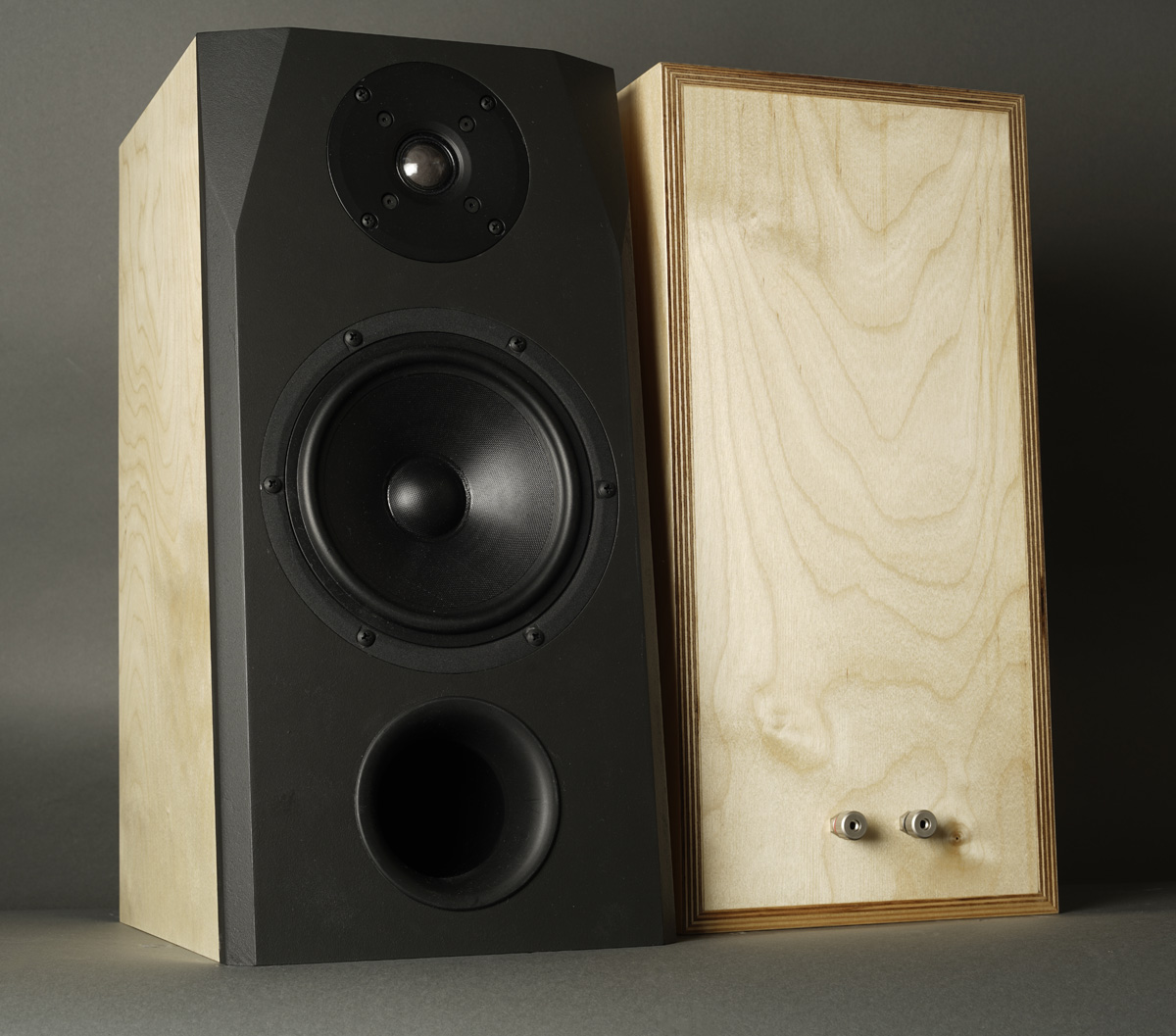
Basics:
2-driver speaker.
Dimensions: 22 x 25/30 x 45 cm, WxDxH.
System sensitivity: 89 dB/2.8V/1 meter.
Impedance: 4-8 Ohms.
Power requirement: 20+ watts/channel.
Useful links (Please
follow all links before e-mailing!):
http://www.troelsgravesen.dk/tips.htm
http://www.troelsgravesen.dk/tips.htm#CONSTRUCTION_OF_CROSSOVERS
http://www.troelsgravesen.dk/crossovers.htm
http://www.troelsgravesen.dk/LCR-RC.htm
http://www.troelsgravesen.dk/Inverted-Polarity.htm
http://www.troelsgravesen.dk/choices.htm
http://www.troelsgravesen.dk/power-handling.htm
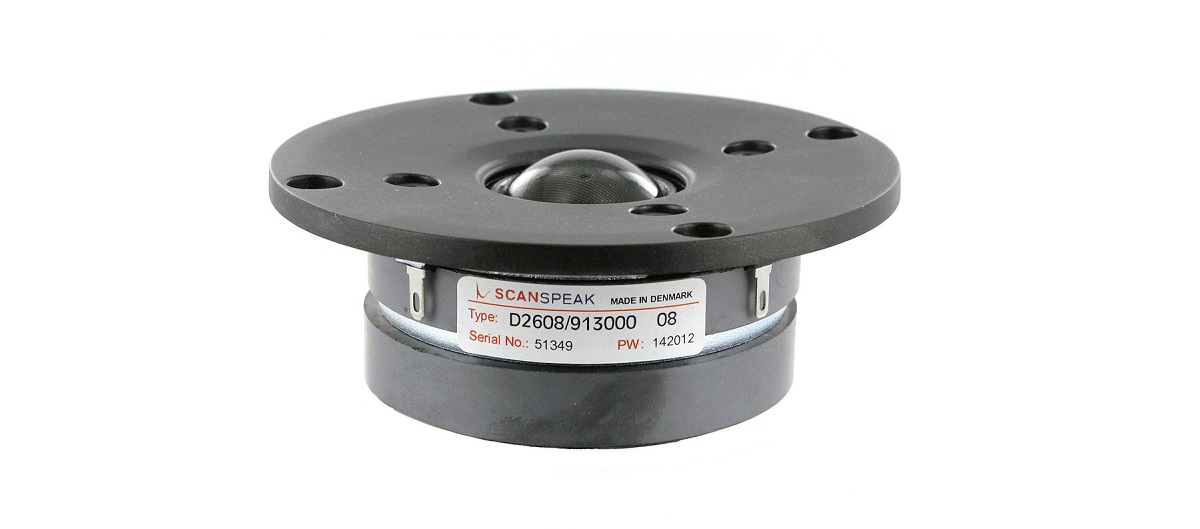
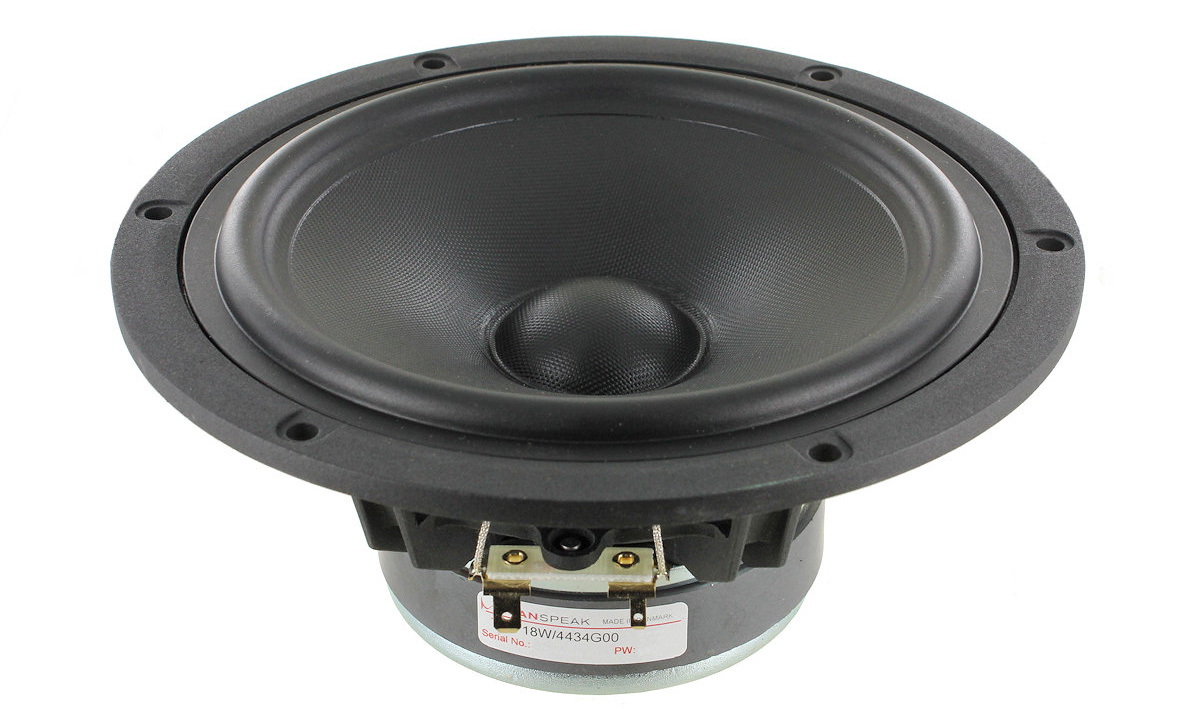
Download specs here: D2608/913000 18W/4434G00
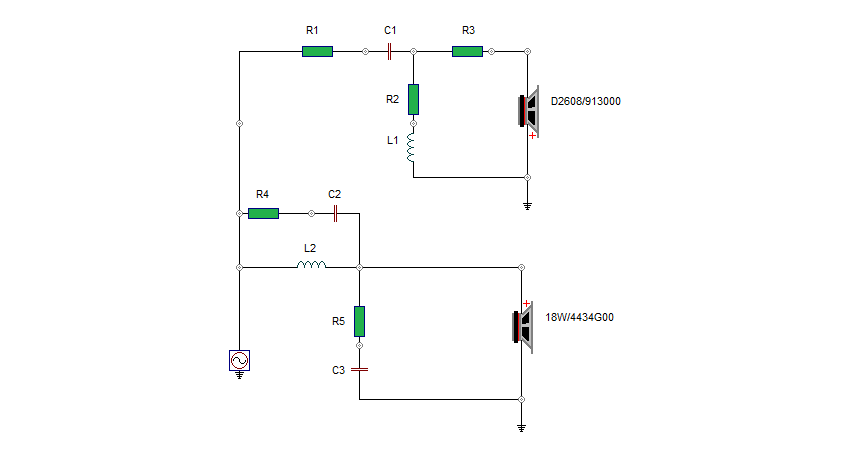
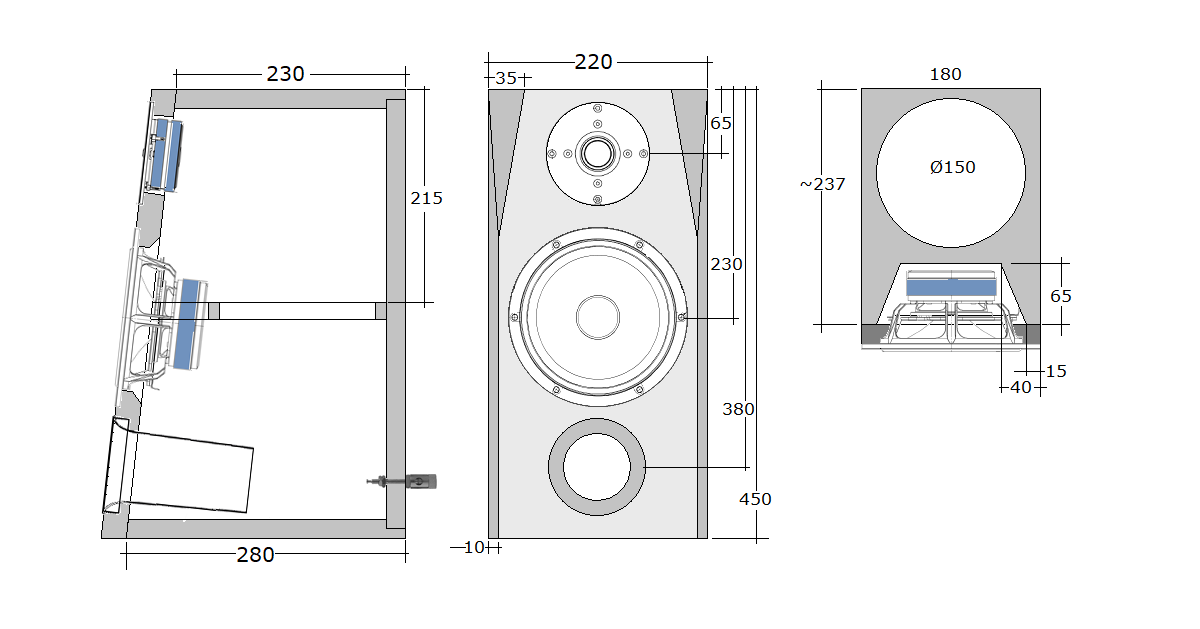
Cabinets were made from 20 mm Baltic birch. Front panels from
25 mm HDF. Use min. 20 mm.
If you use 18-19 mm MDF, I suggest buying the optional
bitumen pads.
Faceting the front panels is optional, but can be done
by hand.
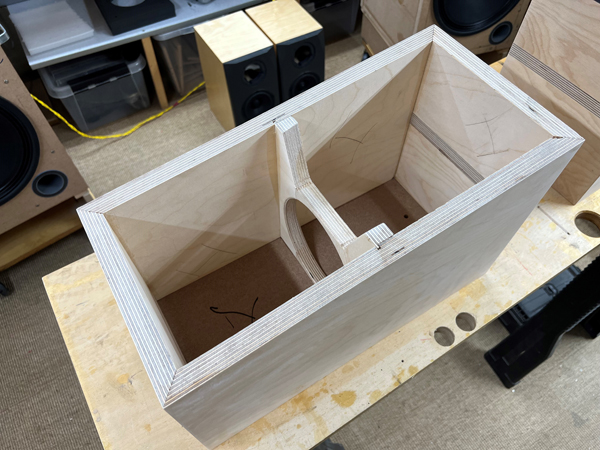
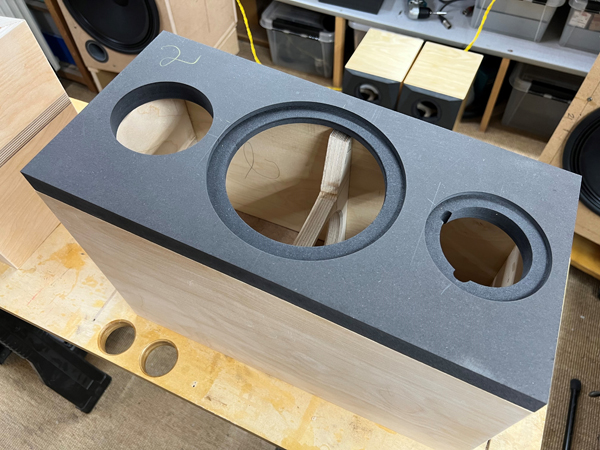
Just a few pics. Not much to show from a
simple box.
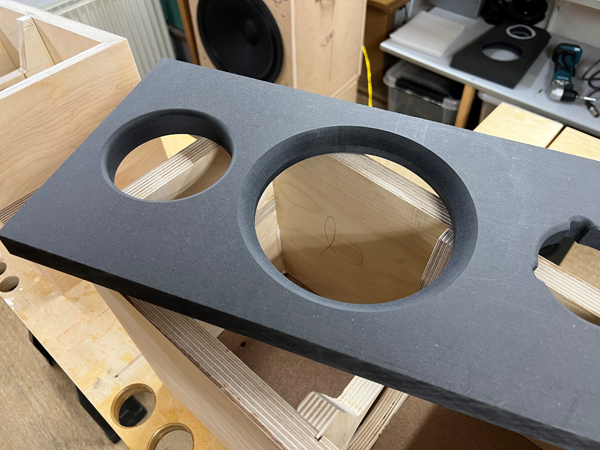
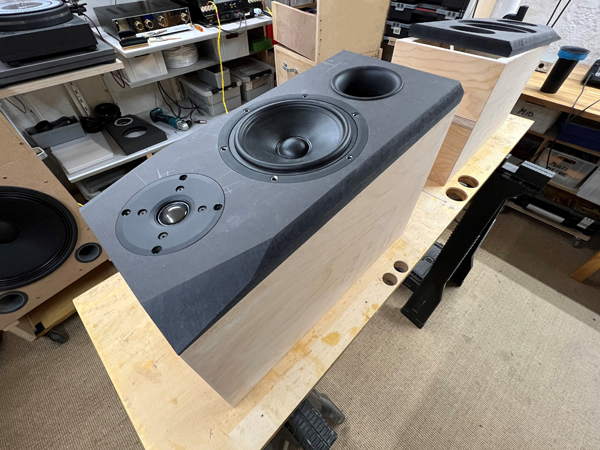
Left: Remember to
chamfer the 18W driver hole. Right: Testing driver rebates and port.
Panel faceting: Front panels were cut ~12 mm/45 deg. in full length.
Top faceting is optional. I sat the table saw to 27 deg vertical and 8
deg. horizontal. Cut to a depth of 20-22 mm (from a 25 mm panel).
Remember faceting can be
done by hand.
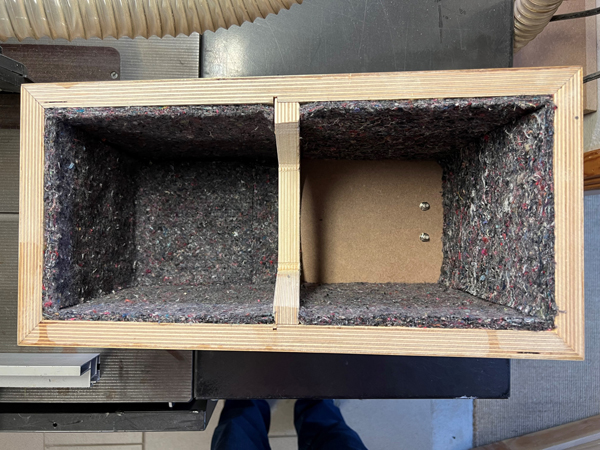
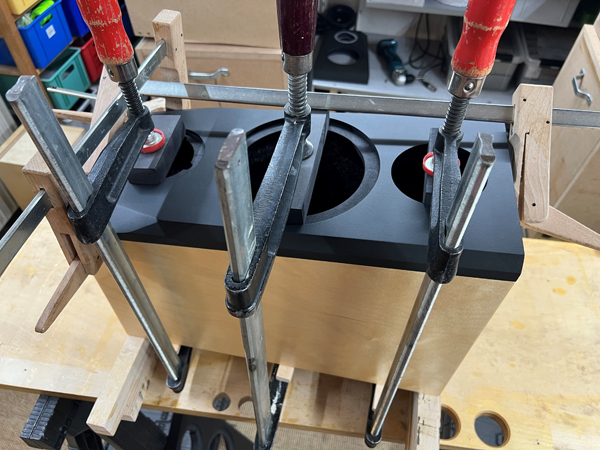
Left: Adding felt to all sides except rear
panel where the crossover will be placed.
Right: Gluing front panels in place.
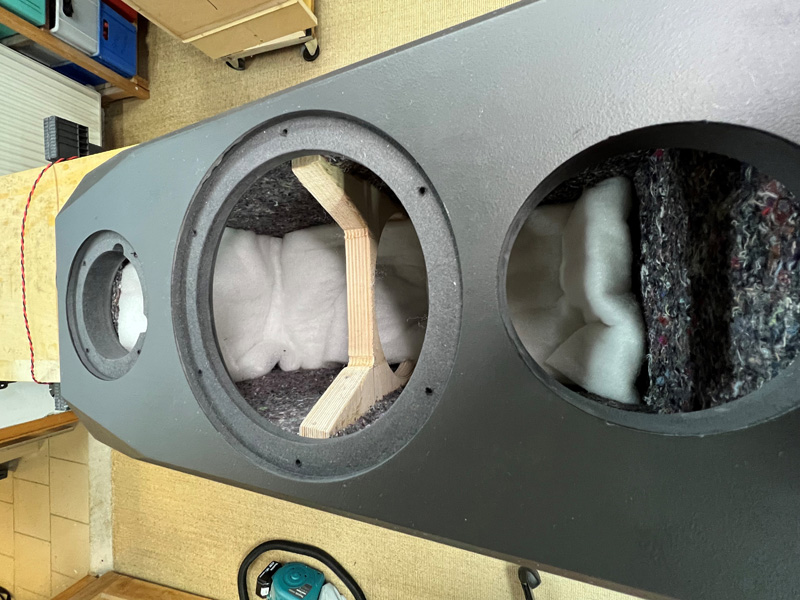
Make two pieces of 18 x 50 cm acoustilux and
place on in upper section and fold the other and place on top of
crossover.
A few comments on
MEASUREMENTS before you start interpreting the readings below.
First of all, if we think measurements will
tell us how a speaker sounds, we're wrong. The perception of sound is
way too subjective to be reflected in any measurements we can perform. A
loudspeaker system is meant to give us a satisfying idea of an acoustic
event and for some people a pair of 5 USD ear-plugs are enough, others
spend 200 kUSD on a truly full-range pair of speakers - and the latter
may not be happier than the former.
Measurements may give us an idea of tonal balance of a system, i.e. too
much or too little energy in certain areas, although dispersion
characteristics play a vital role here. A two-way 7+1 and a three-way
7+4+1 may display similar horizontal dispersion, yet sound very
different. Measurements may tell us about bass extension if far-field
measurements are merged with near-field measurements. In addition to
this, ports may contribute to bass extension. Most of we diy'ers do not
have access to an anechoic room for full-range measurements from
20-20000 Hz.
What cannot be seen is what kind of bass performance we get in a given
room. Bass performance is highly dependent on in-room placement of your
speaker and the same speaker can be boomy in one place and lean in
another. Actual SPL level at 1 meter distance and 2.8V input is useful
for en estimate of system sensitivity and combined with the impedance
profile may give an idea of how powerful an amplifier is needed to drive
the speaker to adequate levels.
What measurements do not tell is the very sound of the speaker unless
displaying serious linear distortion. The level of transparency, the
ability to resolve micro-details, the "speed" of the bass, etc., cannot
be derived from these data. Distortion measurements rarely tell much
unless seriously bad, and most modern drivers display low distortion
within their specified operating range.
Many people put way too much into these graphs and my comments here are
only meant as warning against over-interpretation. There are more to
good sound than what can be extracted from a few graphs. Every graph
needs interpretation in terms of what it means sonically and how it
impacts our choice of mating drivers, cabinet and crossover design.
What measurements certainly do not tell is the sonic signature of the
speaker, because speaker cones made from polypropylene, aluminum,
Kevlar, paper, glass fiber, carbon fiber, magnesium, ceramics or even
diamonds all have their way of adding spices to the stew. Nor do
measurements tell what impact the quality of the crossover components
add to the sound, from state of the art components to the cheapest of
coils and caps, they all measure the same if values are correct, yet
sound very different.
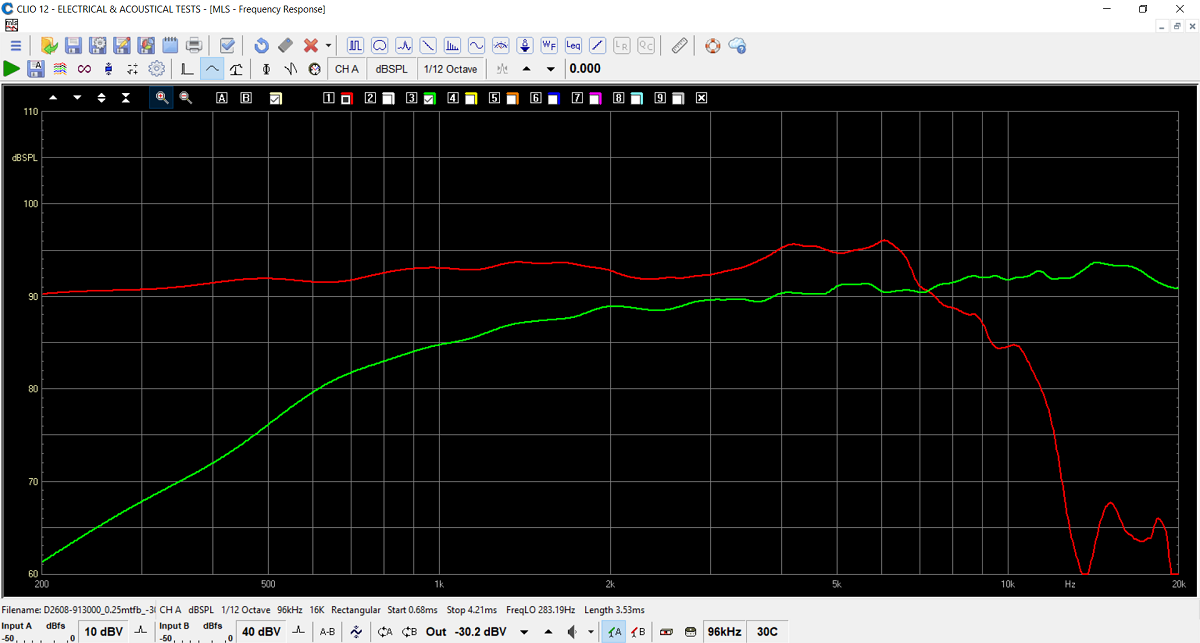
SPL of drivers on actual baffle with no crossover.
It does not get more easy than this.
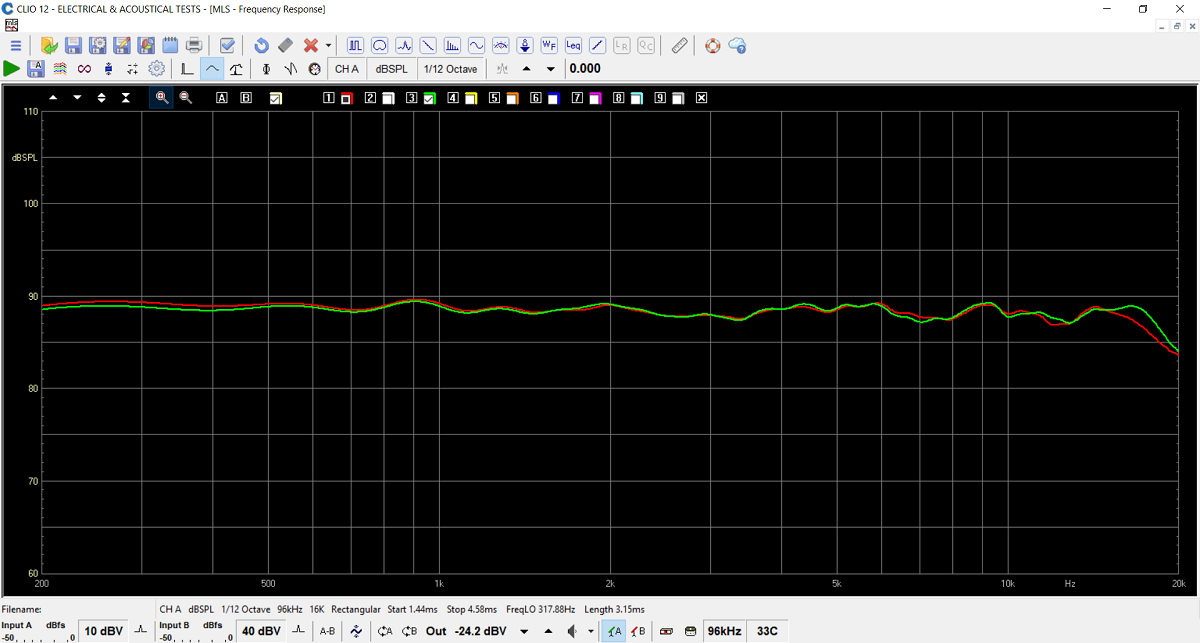
Final system response from left and right speaker.
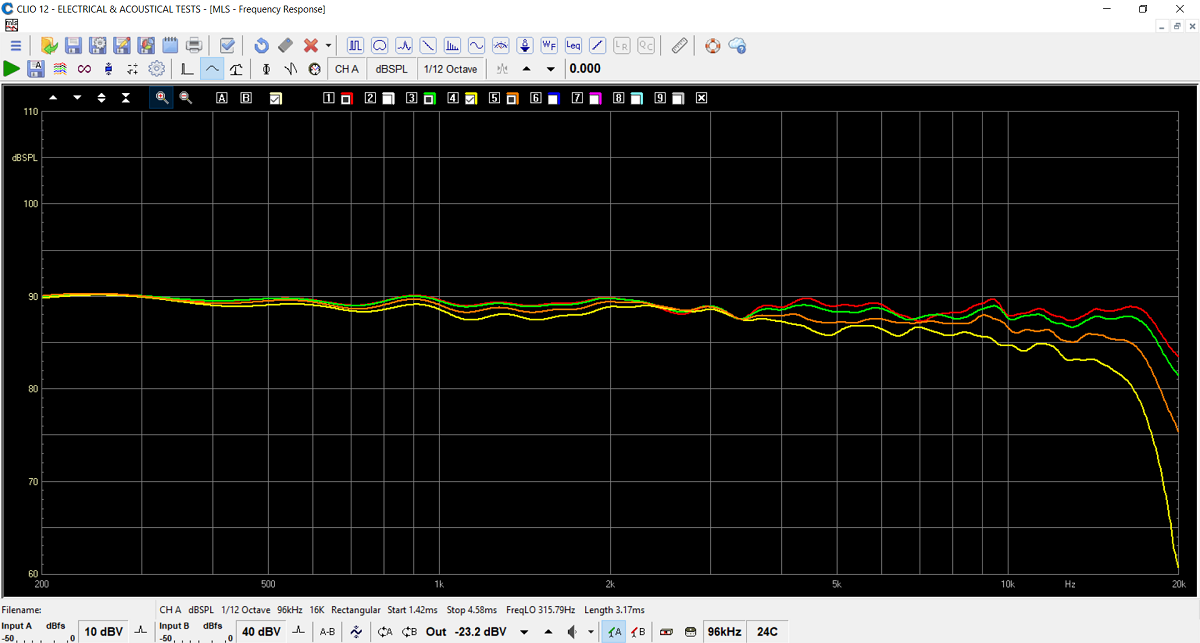
Horizontal dispersion @ 0, 10, 20 and 30 deg. off-axis.
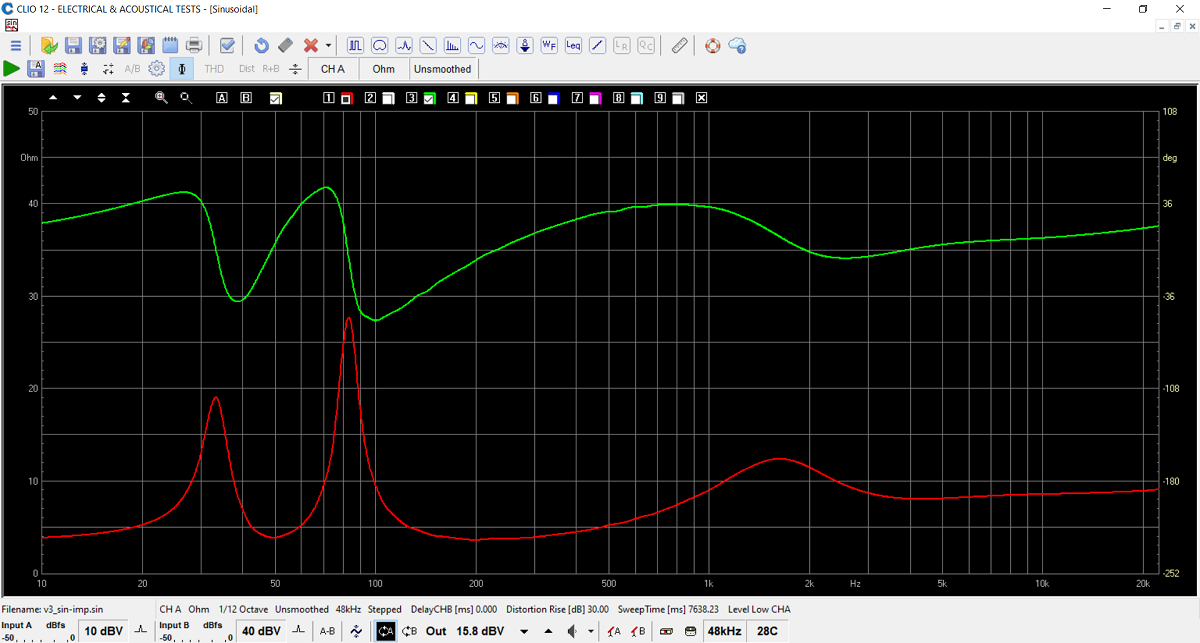
Final system impedance. Minimum 4 Ohms.
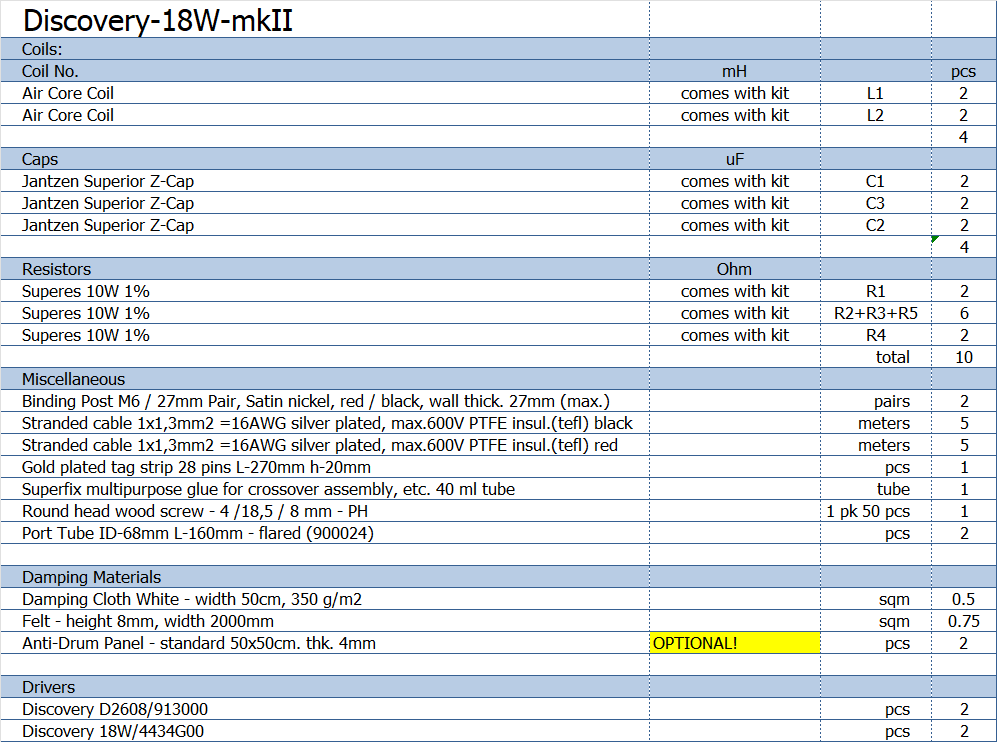
All kit and component prices may be subject to change and are always to be confirmed by Jantzen Audio Denmark.
Kits can always be bought with/without drivers, or some of the drivers.
Download Complete Kit Sale Presentations:

All technical questions to troels.gravesen@hotmail.com
All questions regarding purchase of kits, please mail Jantzen Audio at contact@jantzen-audio.com
CROSSOVER-LAYOUT
BACK TO INDEX
Check this out before start making crossovers:
http://www.troelsgravesen.dk/tips.htm#CONSTRUCTION_OF_CROSSOVERS
Crossover layout
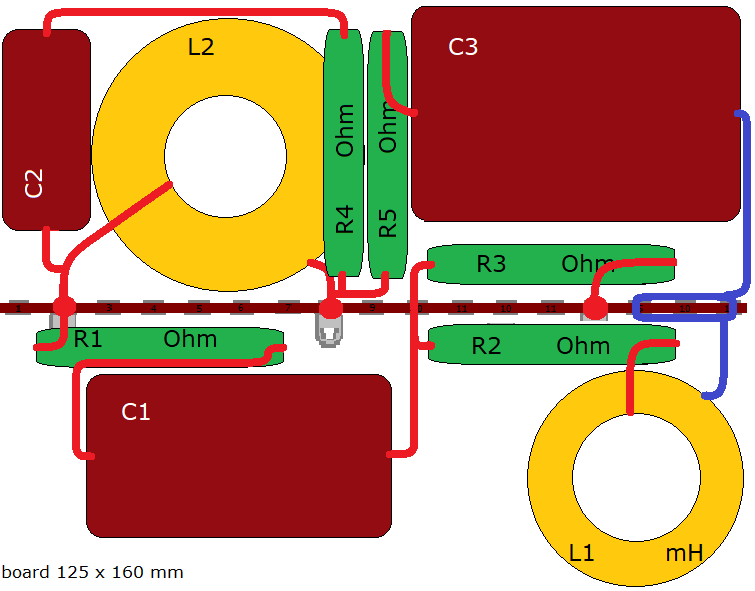
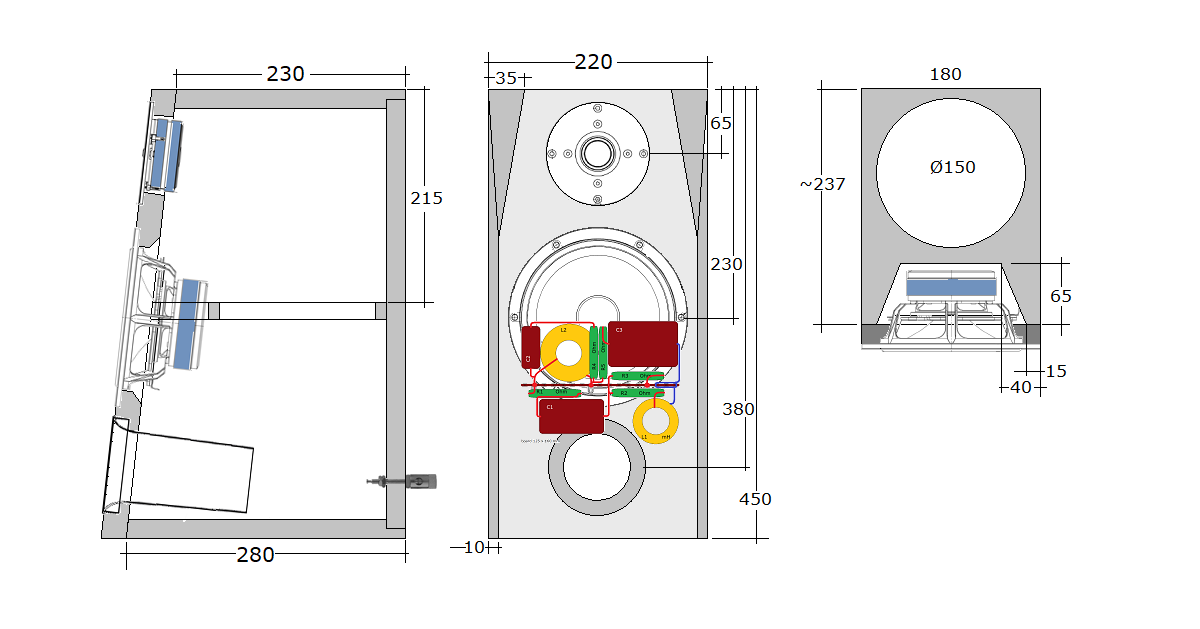
Place crossover on rear panel below brace.
Actual crossover layout.

Crossover placed at rear panel.
Speaker wiring:
